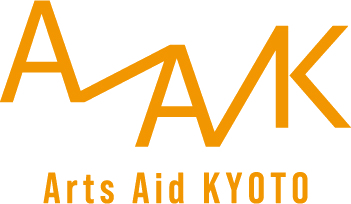

ダンスの作り方という意味で、舞踊の実践理論と考えられています。1970年代後半から、これまでのテクニックによらない新しいダンスのあり方が求められたことに伴い、作品構造における整合性を取るため、コンテンポラリーダンスの創作現場にも演劇のようにドラマトゥルクが起用されるようになりました。このようなダンスドラマトゥルクの活躍は、欧州から世界各地に広がり、振付家やダンサーとともに創作プロセスにかかわりつつ、それを別の視点で考察する「ダンスドラマトゥルギー」という実践的な研究アプローチの誕生に結びつきました。
Dance dramaturgy encompasses both the practical and theoretical aspects of dance . From the late 1970s on, a period in which pre-existing techniques no longer matched the needs of dance, the dramaturg’s role has gradually been introduced from the theatrical world into the creative process in contemporary dance in order to ensure coherence in the structure of the dance piece. Ever since, starting in Europe and spreading worldwide, dramaturgical thinking has also opened up fresh approaches to dance research, in which not only are dramaturgs directly engaged in the creative process itself, but also observe it from a different perspective to that of choreographers or dancers.
ダンスドラマトゥルギーに関する日本語情報がないという声をうけて、私の活動の情報発信を兼ねて、ダンスドラマトゥルギーに関する日英バイリンガルのウェブサイトを作ることにしました。ダンスドラマトゥルギーをめぐる欧米でのこの20年の関心の広がりはとどまることを知らず、近年は大学の学科設立やシリーズ書籍の刊行も始まっています。ただ、ダンスドラマトゥルギーという概念は、多くの議論を引き起こすものであり、またダンスドラマトゥルクの役割も一般化できないため、それらをめぐる欧米の広範な議論は日本ではあまり紹介されてきませんでした。
そのため、このウェブサイトでは、ダンスドラマトゥルギーに関する欧米・アジア・日本のドラマトゥルク/研究者/批評家/アーティストが書いたテクスト抜粋を集めています。日本語のテクストは英語に、英語のテクストは日本語に翻訳しました。日本ではまだ新しいテーマのため、欧米やアジアでの議論の進展とは隔たりがありますが、日本のダンスの視点から見て、結びつきの深いテクストを中心に紹介しています。現時点ではドラマトゥルクの著作や活動にかかわるものを中心に掲載していますが、今後はそれに限らず、創作への刺激に溢れるものも紹介していきたいと考えています。そして、このウェブサイトが、今後ダンスドラマトゥルクとなる人を支えるガイドラインになるだけでなく、ダンスの担い手全てに活用されていくことを願っています。
Given the paucity of texts available in Japanese on dance dramaturgy, I decided to launch a bilingual website on this much overlooked subject. Over the last twenty years, practitioners and researchers alike have become increasingly interested in dramaturgical practices and thinking in the Euro-American context, to such an extent that a master programs in dance dramaturgy and a book series devoted to the topic are currently being published. And yet, the concept of dance dramaturgy remains highly controversial, and dance dramaturgs have yet to find an accepted role. For some reason, any discussion on the topic has yet to make a serious impact in a Japanese context.
This website will introduce written excerpts by dance dramaturgs, researchers, critics, and artists from Euro-American, Asian, and Japanese backgrounds. Contributions from overseas will be translated into Japanese and our overseas readership will equally get an opportunity to acquaint themselves with the writings of Japanese researchers and practitioners. Given dance dramaturgy remains an emerging field, discussions on the subject in Japan have not yet fully matured. To stimulate more debate, I have selected dramaturgical excerpts, including some of my own dramaturgic notes and interviews with artists, from the perspective of dance in Japan. While most texts are by dance dramaturgs, in future I hope to expand our scope by introducing those texts which have inspired our creative process. Serving as a guideline, I hope this website will encourage and foster current and future dance dramaturgs, as well as empower and stimulate all dance makers with their dramaturgical approach for our coming bright future of dance.
中島那奈子
Nanako Nakajima
15min/Vimeo
ダンス研究者、ダンスドラマトゥルク。博士(舞踊学)。日本舞踊宗家藤間流師範。日本学術振興会特別研究員(PD)/埼玉大学、ベルリン自由大学国際パフォーマンス研究センターInterweaving Performane Culturesリサーチ・フェローを経て、各地の大学で教鞭をとりながら、2005年からダンスドラマトゥルクとして国内外で活躍する。
ニューヨークの振付家ルチアナ・アーギュラーとの作品 Exhausting Love at Danspace Project は2006/07年ニューヨーク・ベッシー賞を受賞、2017年には北米ドラマトゥルク協会から、エリオット・ヘイズ賞特別賞を受ける。ドラマトゥルクとしての活動とともに、老いと踊りの研究を並行して進め、研究と実践を組み合わせる近年のプロジェクトに「イヴォンヌ・レイナーを巡るパフォーマティヴ・エクシビジョン」(京都芸術劇場春秋座、2017)、老いた革命バレエダンサーの作品(演出・振付メンファン・ワン、2019)がある。2019/20年は、ベルリン自由大学ヴァレスカ・ゲルト記念客員教授に着任し「ダンスアーカイブボックスベルリン」をベルリン芸術アカデミーで上演。
共著に Dance Dramaturgy: Modes of Agency, Awareness and Engagement (Palgrave, 2015), 編著にThe Aging Body in Dance: A Cross-cultural Perspective (co-edit. by Gabriele Brandstetter, Routledge, 2017)、『老いと踊り』(共編外山紀久子、勁草書房、2019年)。
Nanako Nakajima, Ph.D in Dance Studies, was born and raised in Tokyo. A certified traditional Japanese dance(odori)master, since 2011, Nakajima has worked as a Postdoctoral Research Fellow of the Japan Society for the Promotion of Science /Saitama University, and as a Research Fellow of the International Research Center “Interweaving Performance Cultures,” Freie Universität Berlin.
Since 2005, she has been active as a dance dramaturg in the U.S. Germany, Japan, and throughout Asia. Nakajima’s dramaturgical work with Luciana Achugar, Exhausting Love at Danspace Project, was awarded 2006-07 New York Dance and Performance Awards, aka the Bessies. Nakajima received the 2017 Special Commendation of Elliott Hayes Award for Outstanding Achievement in Dramaturgy from the Literary Manager and Dramaturgs of the Americas. Given that she continues research on aging bodies in dance in parallel with her professional activities, her recent dance projects, such as the Yvonne Rainer Performative Exhibition at the Kyoto Art Theater Shunju-za, 2017, and When My Cue Comes, Call me, and I Will Answer, choreographed and directed by Mengfan Wang, 2019, have all integrated research and dramaturgical practice. She was appointed to be a Valeska-Gert Visiting Professor 2019-20 at the Freie Universität Berlin where she realized the Dance Archive Box Berlin project.
Her contributions and publications include Dance Dramaturgy: Modes of Agency, Awareness and Engagement (Palgrave, 2015), The Aging Body in Dance: A Cross-cultural Perspective (co-edit. by Gabriele Brandstetter, Routledge, 2017), and Oi to Odori (Aging plus Dancing, co-edit. by Kikuko Toyama, Keiso Shobo, 2019.)
プロジェクトディレクション/ドラマトゥルギー
ドイツ・ベルリン自由大学(ヴァレスカ・ゲルト記念客員教授プロジェクト)
学生たちとのプレゼンテーション(ベルリン芸術アカデミー、2020年2月11日)
Project Direction/ Dramaturgy
Valeska-Gert Visiting Professor 2019/20 (Freie Universitaet Berlin, Germany)
Presentation with Master Students in Dance Studies (Akademie der Künste, Berlin, February 11, 2020)
ドラマトゥルギー
メンファン・ワン振付・演出(烏鎮演劇祭 2019、北京中間劇場 2019、上海明当代美術館 2020)
Dramaturgy
Directed and Choreographed by Mengfan Wang (Premier at Wuzhen Theater Festival 2019, Beijing Inside-Out Theater 2019, Shanghai Ming Contemporary Art Museum (McAM) 2020)
共同ドラマトゥルギー
タナポン・ウィルンハグン振付
KAAT神奈川芸術劇場中スタジオ(TPAM 国際舞台芸術ミーティング in 横浜、2019)
Co-Dramaturgy
Coreographed by Thanapol Virulhakul (TPAM Performing Arts Meeting in Yokohama 2019, Japan)
プロジェクトディレクション/ドラマトゥルギー
「老いを巡るダンスドラマトゥルギー」2017年共同利用・共同研究、舞台芸術研究センター、京都造形芸術大学、2017年10月11−15日、京都芸術劇場春秋座
Project Direction/Dramaturgy
“Dance Dramaturgy on Aging” for the 2017 joint research project, the Interdisciplinary Research Center for Performing Art, Kyoto University of Arts and Design, the Kyoto Art Theater Shunju-za, October 11–15, 2017.
共同ドラマトゥルギー
ブルーノ・イサコヴィッチ振付(東京・森下スタジオ、2018年2月15–16日)
Co-Dramaturgy
Choreographed by Bruno Isaković (Tokyo Morishita Studio, February 15-16, 2018)
プログラムディレクション/ドラマトゥルギー
(国際舞台芸術ミーティング in 横浜 (TPAM)、横浜赤レンガ倉庫)
Program Direction/Dramaturgy, TPAM Direction
(Performing Arts Meeting in Yokohama (TPAM), Japan)
ドラマトゥルギー
セバスティアン・マティアス振付(タンツハウスNRW、タンツイムアウグスト、フェスティバル・トーキョー、キュンストラーハウス・ムゾントム、2016年6月―2017年1月)
Dramaturgy
Choreographed by Sebastian Matthias (tanzhaus NRW, Tanz im August, Festival Tokyo, Künstlerhaus Mousonturm, Frankfurt a.M., June 2016 –Jan. 2017)
ドラマトゥルギー
砂連尾理振付・ファシリテーション(名取市文化会館), 2014年3月13−16日
Dramaturgy
Choreographed and facilitated by Osamu Jareo (Natori City Cultural Center, Miyagi, March 13-16, 2014)
共同ドラマトゥルギー
イニシアチブ:演出家・シンガポール国際芸術祭芸術監督オン・ケンセン(2014年セゾン文化財団、2015年シンガポール国際芸術祭)
Co-Dramaturgy
Initiated by Theater Director Ong Keng Sen (2014 Saison Foundation; 2015, Singapore International Festival of Arts)
コラム「ダンスアーカイブボックス@シンガポール国際芸術祭」『シアターガイド』二月号、Vol.288(2015年12月)
英語論文:"The Archiving Body in Dance: The Trajectory of the Dance Archive Box Project," Nanako Nakajima, Moving(Across)Borders: Performing Translation, Intervention, Participation, edited by Gabriele Brandstetter and Holger Hartung, transcript Verlag, pp.191-218, 2017.ドラマトゥルギー
砂連尾理振付(F40劇場、アートシアターdB神戸、京都エクスペリメント2012)
Dramaturgy
Choreographed by Osamu Jareo (F40 Theater, Berlin, ArtTheater dB, Kobe, Japan, and KYOTO EXPERIMENT 2012)
ドラマトゥルギー及びムーヴメントコーチ
クシルジャ・ホワング振付(ニューヨーク・ジャパンソサエティ)
Dramaturgy and Movement Coach,
Choreographed by koosil-ja Hwang (the Japan Society New York 2007)
ドラマトゥルギー
トラジャル・ハレル振付(NYセント・マークス教会、2007年1月25−28日)
Dramaturg, artistic advice
Choreographed by Trajal Harrell (St. Mark's Church In-the-Bowery, New York, Jan. 25-28, 2007)
ドラマトゥルギー
ルシアナ・アギュラー振付(NYセント・マークス教会、2006年11月9日−12日)
ニューヨークベッシー賞受賞作品
Dramaturgy
Choreographed by Luciana Achugar (St. Mark's Church In-the-Bowery, New York Nov. 9-12, 2006)
New York Performance Award (Bessies)
アシスタントドラマトゥルギー
劇団クロッシング・ジャマイカ・アヴェニュー、チオリ・ミヤガワ作、ソノコ・カワハラ演出(ニューヨークPS122、2006年2月–3月)
Dramaturgical Assistant
THE CROSSING JAMAICA AVENUE, written by Chiori Miyagawa, directed by Sonoko Kawahara (Feb.-Mar., 2006, at PS122, New York)
ドラマトゥルギー
チャメッキ・レルナー振付(ニューヨーク、ダンスシアターワークショップ、2005年4月)
Dramaturgy
Choreographed by CHAMECKILERNER (Dance Theater Workshop in New York, April, 2005)
舞台芸術で活躍する「ドラマトゥルク」という仕事が知られるようになってきました。リサーチを基礎に様々な場面で活躍するこのドラマトゥルクの意義を、日本でより明確にし、次世代に伝えることが期待されています。2024年3月、第一線で活躍する国内外のドラマトゥルクによる日本で初めてのドラマトゥルク・ミーティングを開催します。ドラマトゥルクの創造的な役割を紐解くレクチャーやセミナー、ワークショップを通して、従来の作品づくりを乗り越える、対話型の新しい作り方に出会うことになるでしょう。
●3月20日(水祝)14:30開場/15:00開演(終了予定19:00)
オープニング・シンポジウム
会場:京都芸術劇場春秋座ホワイエ
参加費:一般1500円、学生1000円(要学生証提示)
●3月21日(木)10:30開場/11:00開演(終了予定18:30)
レクチャー&セミナー
会場:京都芸術劇場春秋座ホワイエ
参加費:一般2000円、学生1500円(要学生証提示)
●3月23日(土)14:45開場/15:00開始(終了予定16:00)
ドラマトゥルク・ワークショップ 一般公開
会場:ロームシアター京都ノースホール
参加費:無料
コラボレーター:
岡元ひかる(ダンス研究/芸術文化観光専門職大学助教)
中島那奈子(ダンス研究/バンフ・センター(カナダ)ダンスドラマトゥルク)
長島確(ドラマトゥルク/東京芸術祭FTレーベルプログラムディレクター/東京藝術大学准教授)
ピル・ハンセン(ダンスドラマトゥルク/カルガリー大学教授/パフォーマンス・スタディーズ・インターナショナル前学会長)
横山義志(ドラマトゥルク/SPAC-静岡県舞台芸術センター文芸部/東京芸術祭リサーチディレクター/学習院大学非常勤講師)
シャーリーン・ラジェンドラン(演劇教育者/ドラマトゥルク/アジア・ドラマトゥルク・ネットワーク共同ディレクター/シンガポール国立教育研究所・南洋工科大学准教授)
主催:ドラマトゥルク・ミーティング実行委員会
共催:京都芸術大学舞台芸術研究センター 舞台芸術作品の創造・受容のための領域横断的・実践的研究拠点、ロームシアター京都(公益財団法人京都市音楽芸術文化振興財団)
助成:

*本企画の一部はJSPS科研費JP21K00131とJP22K19979の助成を受けたものです。
協力:NPO法人DANCE BOX、tapetum works
お問い合わせ:dramaturgsmeeting@gmail.com
3月14日(木)12:30開場/13:00開始(終了予定16:00)
ピル・ハンセン『Performance Generating Systems in Dance: Dramaturgy, Psychology, and Performativity』を読む
会場:ArtTheater dB KOBE (NPO法人DANCE BOX)
参加費:1000円
Six dramaturg practitioners and academics from Asia and America collaboratively held a dramaturgs’ meeting, entitled “What happens when Dramaturg Is Present? Reflecting on Creative Practice, Process, and Research in Performance Making”, which consisted of an opening symposium on March 20, lectures and seminars on March 21 at Kyoto Art Theater Shunju-za and workshops at ROHM Theater Kyoto on March 23, 2024. The title suggests a shift in dramaturgy from traditional dramatic theatre to broader performance making contexts, as presented by these dramaturgs working across various fields, including applied theatre, dance performance, performing arts, theatre and art festivals.
中島那奈子:今日は2022年4月19日です。本日はニューヨーク大学のアンドレ・レペッキ教授のオフィスにお伺いしています。インタビューをお引き受けいただき、ありがとうございます。レペッキさんは、ヨーロッパやアメリカで、多くの実験的なアーティストと協働されてきましたが、まずご自身の活動について簡単にご紹介いただけますか?
N: Nanako Nakajima
Today is April 19th, 2022. I am here together with Professor André Lepecki at his office in New York University. Thank you very much for accepting to do this interview. You have worked with many artists in Europe and the USA, many of whom are experimental. Could you briefly introduce your work?
中島那奈子:今日は2023年8月8日です。本日は、ベルリン自由大学のガブリエレ・ブラントシュテッター教授のオフィスにお伺いし、ドイツ語圏文化におけるダンスとドラマトゥルギーについてお話を伺いたいと思います。本日はお招きいただき、誠にありがとうございます。
N: Nanako Nakajima
Today is August 8th, 2023. I am here together with Professor Gabriele Brandstetter at her office in the Free University of Berlin. And today we will talk about dance and dramaturgy across German-speaking cultures. Thank you very much for hosting me.
ダンスが出来るとはいったいどういうことで、ダンサーとはいったいどのような人なのか、そして異なった背景の他者と対話することでそれをどう変えていくことが出来るのか-そのような問いかけは、歩くことをダンス作品として初めて提示したポストモダンダンスへのオマージュとも言える冒頭の部分を始めとして、構成の色々な部分で試みられています。シンプルにコンセプトを表した2009 年の構成から比べると、神戸公演を経て、プロジェクトの構成は複雑化しています。
Some Background to this German-Japanese Joint-Project
What does it actually mean to be able to dance; what kind of person can become a dancer; and how can such perceptions be modified through dialogue with those from diverse backgrounds? We examined such questions in various parts of this joint performative structure, beginning with the opening walking section, as though we were acknowledging post-modern dance that initially treated walking as a building block in dance. If compared with the straightforward conceptual structure of the 2009 Berlin presentation through to the 2011 performance in Kobe, this project’s structure has become more complex over time.
「Pacific / Pacifique」は語源的に「Peace / Paix (平和)」とつながる。この〔2015年の集大成的な〕作品Dance Song Music『PACIFIKMELTINGPOT』は、舞台の両はしに分かれて対面する人たち――太平洋の島々から寄り集まった、体格も肌の色も言語も異なる人たち――が、ボールを向こうの相手に転がすことからはじまる(「ボール(balle)」 はフランス語で「銃弾」をも意味する)。人間は誰しもその身のうちに赤色に近い血液を有しているが、皮膚の色や言葉などの外表的な、また民族や国籍などの一般的な違いを強調して争う。自分たちの属する島々がいかに海の底で通じていようと、目に映る陸上や海上の囲いを一義に争う。ショピノは本書の自伝のなかでいう。芸術的な想像力とは、それら表面上の、一見して離れた物事のうちに、内奥の響き合う関係を捉える力であると*。
The English and French words Pacific/Pacifique are etymologically linked to peace/paix. In the 2015 culminating performance of Régine Chopinot’s Dance Song Music Project, PACIFIKMELTINGPOT, performers face each other on either side of the stage. They vary in build, skin-colour, and speak a spectrum of languages from islands across Oceania. The performance gets underway with a ball being bounced across to the far side of the stage. Interestingly, the French word balle designates a “bullet.” While each and every human being has red blood flowing through their veins, they nonetheless fight over outward differences such as skin colour and language, as well as more generic differences such as ethnicity and nationality. Irrespective of how the Pacific islands to which they belong interlink on the ocean bed, the islanders still dispute about everything visible on land and sea. In her writings, Chopinot remarks that “artistic imagination is the power to see in these superficial, and apparently remote things, an inner, resonant relationship.
撮影・編集|岩井優
録音・音響|田代啓希
製作|西原多朱
共同監督|中島那奈子
Video: Masaru Iwai
Sounds: Hiroki Tashiro
Production: Tazz Nishihara
Co-Direction: Nanako Nakajima
英日翻訳|辻井美穂
日英翻訳、英語テキスト編集|ジョン・バレット
日本語編集|川野惠子
ウェブデザイン|松岡未来
コンセプト/統括|中島那奈子
English-Japanese translations: Miho Tsujii
Japanese-English translations and proofreading of English texts: John Barrett
Editing Japanese texts: Keiko Kawano
Web Design: Miku Matsuoka
Concept and Direction: Nanako Nakajima
Website Photos :
Ayako Abe, Toshie Kusamoto, Kim-Lena Sahin, Jan-Peter Schulz, Wu Shi